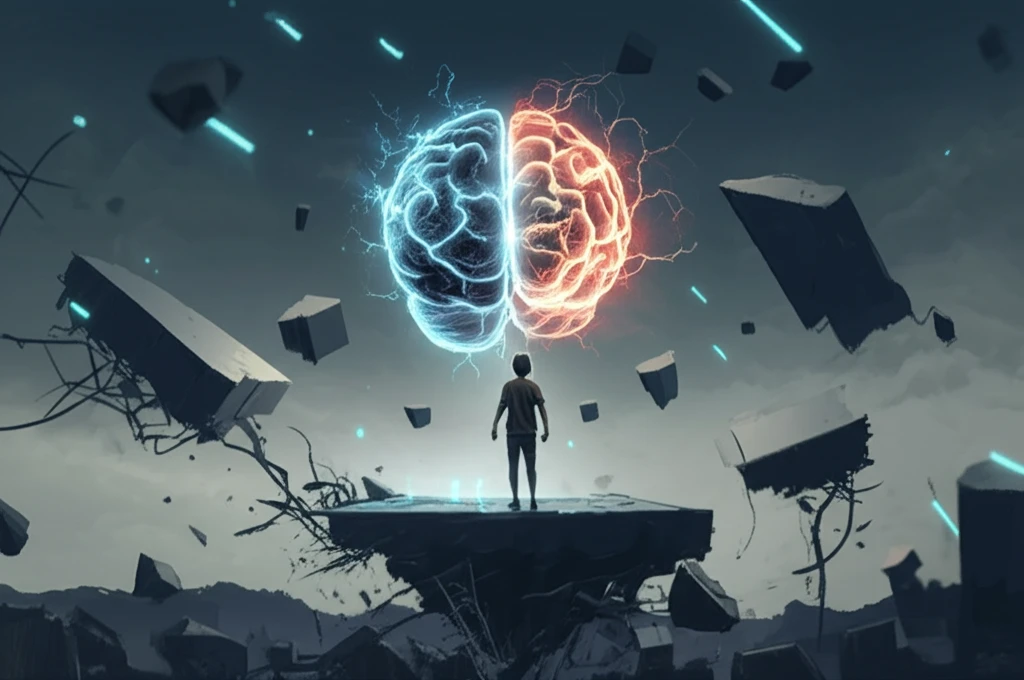
Decoding Balance: How Your Brain and Muscles Team Up (or Don't!) Under Pressure
"New research reveals the surprising disconnect between brain signals and muscle responses when you're trying not to fall."
Maintaining balance is something we often take for granted, yet it’s a complex interplay of sensory information, brain processing, and muscle activation. When faced with a sudden disturbance, like a slippery surface or an unexpected nudge, our bodies initiate a series of rapid corrections to prevent a fall. For years, scientists have been trying to unravel the mysteries of how the brain orchestrates these movements, particularly the relationship between cortical activity (brain signals) and muscle responses.
The traditional view suggests a seamless connection: the brain senses the imbalance, sends signals, and muscles react in a coordinated fashion. However, emerging research is painting a more nuanced picture. Scientists are beginning to understand how unpredictable balance disturbances can also serve as a startling stimulus, evoking brainstem-mediated startle reflex muscle activity (Brown et al. 1991), simultaneous to the balance-correcting APR, particularly during the first few trials (Nonnekes et al. 2015; Siegmund et al. 2008).
New research published in the Journal of Neurophysiology dives deep into this brain-muscle connection, challenging the idea of a simple cause-and-effect relationship. By examining how the brain and muscles respond to varying levels of balance perturbation, the study reveals a surprising dissociation – suggesting that while both systems are triggered by the same sensory inputs, they operate with a significant degree of independence.
The Brain-Body Balancing Act: What's Really Going On?

To investigate the intricate relationship between brain and muscle activity during balance recovery, researchers at Georgia Tech, Emory University, and Florida State University conducted a study involving healthy young adults. Participants were subjected to a series of unpredictable support-surface translations – movements of the platform they were standing on – in both forward and backward directions. These perturbations varied in acceleration, challenging the participants' balance in different ways.
- EEG (Electroencephalography): To measure cortical activity, specifically the N1 potential, a negative peak in brain activity associated with balance control.
- EMG (Electromyography): To measure muscle activity in key balance-related muscles, including the tibialis anterior (TA), medial gastrocnemius (MG), and sternocleidomastoid (SC).
- Motion Capture: To track body movements and identify stepping responses.
The Takeaway: Rethinking Balance Training
This research highlights the complexity of the human balance system. While our brains and muscles work together to keep us upright, they don't always follow the same script. By understanding the independent mechanisms at play, we can potentially develop more targeted and effective balance training programs. Future research should focus on exploring the factors that influence cortical activity during balance and how to bridge the gap between brain and muscle responses for optimal stability. Stay tuned for more insights into the fascinating world of balance and motor control!
